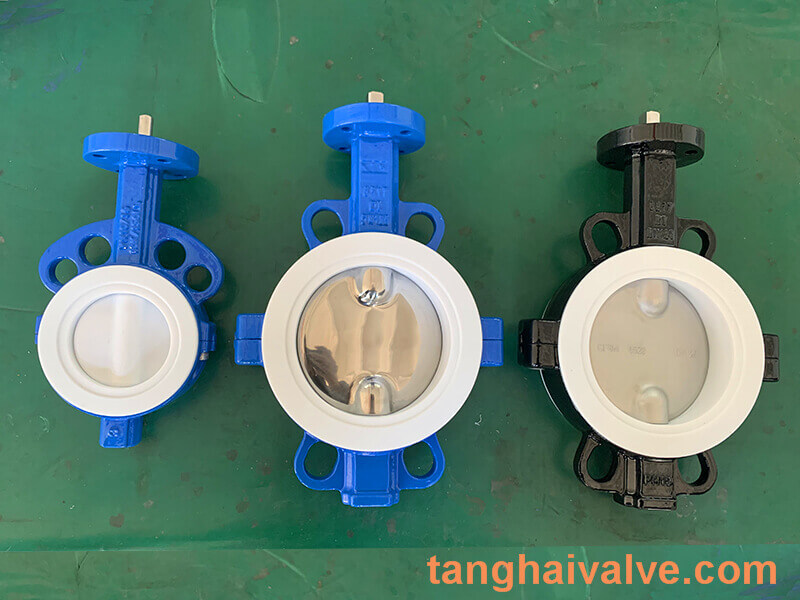Prevention and treatment of valve corrosion
What is valve corrosion?
Corrosion of the valve is usually understood as the damage to the metal material of the valve under the action of a chemical or electrochemical environment. Since the “corrosion” phenomenon occurs in the spontaneous interaction between the metal and the surrounding environment, how to isolate the metal from the surrounding environment or use more non-metallic synthetic materials is the focus of corrosion prevention. The valve body (including the bonnet) of the valve occupies most of the weight of the valve and is in constant contact with the medium. Therefore, the selection of the valve is often based on the material of the valve body.

Fluorine lined butterfly valve-PTFE-WAFER (8)
The corrosion of the valve body is nothing more than two forms, namely chemical corrosion and electrochemical corrosion. Its corrosion rate depends on the temperature, pressure, chemical properties of the medium and the corrosion resistance of the valve body material. The corrosion rate can be divided into six levels:
1. Complete corrosion resistance: the corrosion rate is less than 0.001 mm/year;
2. Extremely resistant to corrosion: the corrosion rate is 0.001 to 0.01 mm/year;
3. Corrosion resistance: the corrosion rate is 0.01 to 0.1 mm/year;
4. Still corrosion resistant: the corrosion rate is 0.1 to 1.0 mm/year;
5. Poor corrosion resistance: the corrosion rate is 1.0 to 10 mm/year;
6. Not resistant to corrosion: the corrosion rate is greater than 10 mm/year.
How to prevent valve corrosion?
The anti-corrosion of the valve body is mainly based on the correct selection of materials. Although there are abundant anti-corrosion materials, it is not easy to choose the right one, because the problem of corrosion is very complicated. For example, sulfuric acid is very corrosive to steel when the concentration is low, and when the concentration is high, the steel is produced. Passivation film can prevent corrosion; hydrogen only shows strong corrosiveness to steel under high temperature and high pressure. The corrosion performance of chlorine is not great when it is in a dry state, but it is very corrosive when there is a certain humidity, and many materials cannot be used. . The difficulty in selecting valve body materials lies in not only considering corrosion issues, but also factors such as pressure resistance and temperature resistance, whether it is economically reasonable, and whether it is easy to purchase. So it must be attentive.
1. The second is to take lining measures, such as lining lead, lining aluminum, lining engineering plastics, lining natural rubber and various synthetic rubbers. If the media conditions permit, this is an economical method.
Second, again, when the pressure and temperature are not high, the main material of the fluorine-lined valve can often be very effective in preventing corrosion.
3. In addition, the outer surface of the valve body is also corroded by the atmosphere, and generally steel materials are protected by painting.
TH Valve is a professional manufacturer of butterfly valve, gate valve, check valve, globe valve, knife gate valve, ball valve with API, JIS, DIN standard, used in Oil, Gas, Marine industry, Water supply and drainage, fire fighting, shipbuilding, water treatment and other systems, with Nominal Diameter of DN50 to DN1200, NBR/EPDM/VITON, Certificates & Approvals: DNV-GL, Lloyds, DNV, BV, API, ABS, CCS. Standards: EN 593, API609, API6D



 © Copyright 2020 Tianjin Tanghaidongyang Valve Co., Ltd. All Rights Reserved.
© Copyright 2020 Tianjin Tanghaidongyang Valve Co., Ltd. All Rights Reserved.